- The battle for the Amazon is being fought over two opposing viewpoints: the first, mostly held by indigenous and traditional people and their conservationist allies, sees forests and rivers as valuable for their own sake, and for the livelihoods, biodiversity, ecological services and climate change mitigation they provide. For them the forests need protection.
- The second worldview holds that Amazon forests are natural resources to be harvested and turned into dollars, an outlook largely held by wealthy landowners, land thieves, loggers, cattle ranchers and farmers. For them the forests are there to be cut down, and the land is there to be used for economic benefit.
- The bancada ruralista agribusiness lobby now has overwhelming political power in the Brazilian Congress and the Temer administration, which are pushing a raft of bills and administrative actions to take away indigenous land rights, dismember conservation units, gut environmental licensing laws and defund environmental protection agencies.
- The great fear is that the collision of the two worldviews in the wilds of the Amazon will result in escalating lawlessness and bloodshed against indigenous and traditional people, along with significant environmental destruction. The loss of Amazon ecosystems could be catastrophic for humanity, as the region’s forests are crucial for global carbon storage.
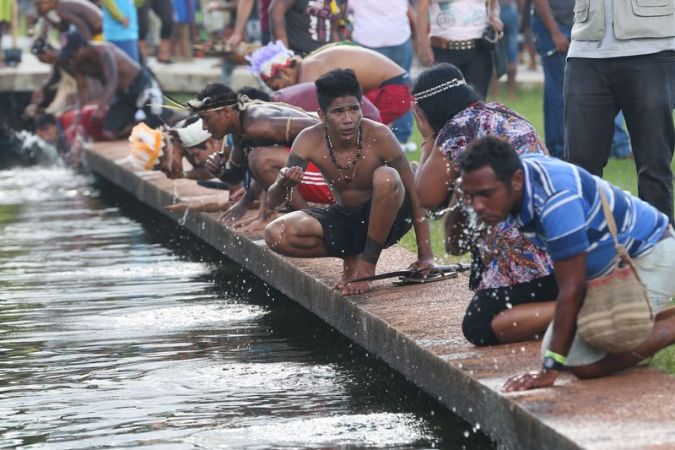
(Leia essa matéria em português no The Intercept Brasil. You can also read Mongabay’s series on the Tapajós Basin in Portuguese at The Intercept Brasil)
The Tapajós River Basin lies at the heart of the Amazon, and at the heart of an exploding controversy: whether to build 40+ large dams, a railway, and highways, turning the Basin into a vast industrialized commodities export corridor; or to curb this development impulse and conserve one of the most biologically and culturally rich regions on the planet.
Those struggling to shape the Basin’s fate hold conflicting opinions, but because the Tapajós is an isolated region, few of these views get aired in the media. Journalist Sue Branford and social scientist Mauricio Torres travelled there recently for Mongabay, and over coming weeks hope to shed some light on the heated debate that will shape the future of the Amazon. This is the fourteenth, and final, of their reports.

This week, police dispersed a peaceful indigenous protest in Brasilia with teargas and rubber bullets, as more than 3,000 Indian leaders gathered to demonstrate against the Temer administration, the Brazilian Congress, and new policies aimed at gutting indigenous and environmental protections, and at opening the Amazon to land thieves and agribusiness. This newest battle is anchored in a war of worldviews that is more than 500 years old.
“We, the people who live in the forest, are not poor. No one here has ever been poor because we have the standing forest. All our history is in our standing forest. But without the forest, we are going to be very poor,” Juarez Saw told us calmly when we talked with the Munduruku chief. He is the leader of Sawre Muybu village, an Indian community on the middle reaches of the Tapajós River in the Amazon.
Indigenous leaders, including several Munduruku chiefs, gathered in Brasilia this week for their largest collective protest ever. They believe that if the “whites” continue with their reckless destruction in the region, the entire Amazon forest will vanish. If this happens, Juarez Saw warned, more in sadness than in anger, we will all suffer: “Just like us, the ‘whites’ will not survive the devastation either.”

Rivers vs. roads
There are two main ways of traveling through the Amazon. One, by far the older, is by river and it led over many centuries to the rise of indigenous villages, traditional communities and towns along riverbanks. The other, far more recent, is by road. From the 1970s on, highways were cut through the forest, and with them came a new mindset.
Three hundred kilometers to the southeast of the village of Sawre Muybu is the town of Novo Progresso. It isn’t located on a river but on a ribbon of asphalt known as the BR-163, a key highway linking Cuiabá, the capital of Mato Grosso state, with Santarém on the Amazon River. The road cuts straight through the rainforest, and is a major conduit for soy shipped from Brazil’s interior to the sea.
It is along this highway that many newcomers came in search of their fortunes, or at least livelihoods. Some were peasant families, expelled from other regions because of Brazil’s concentrated system of land tenure. They arrived in large numbers, each in search of a plot of land to call their own. Another group — loggers, land thieves, cattle ranchers, farmers, adventurers — came to strike it rich, or to get even richer, on Brazil’s agricultural frontier.
One representative figure of this second group is Agamenom da Silva Menezes, the spokesman for the real estate speculators and big land grabbers in Novo Progresso, who has been in the region for 30 years, as he proudly told us last November. Agamenom believes that people like him are bringing progress to a backward region.
His views stand in dire contrast to those of the Munduruku chief: “Brazil is poor because it doesn’t deforest,” Agamenom told us. “The word, deforest, is a provocation. In fact, what is happening is an alteration in the forest. The area isn’t left bare. It’s used for crops, for pasture, for something. A planted forest replaces a native forest.”
Like many Amazon frontiersmen, Agamenom feels superior to the indigenous population and is angered by any suggestion that they have any prior legal right to Amazon lands. In an earlier interview, he declared: “Not everything here is how they [the NGOs] think it is. Are we all idiots? Stupid? Are we all river dwellers who eat vines and heart of palm?”
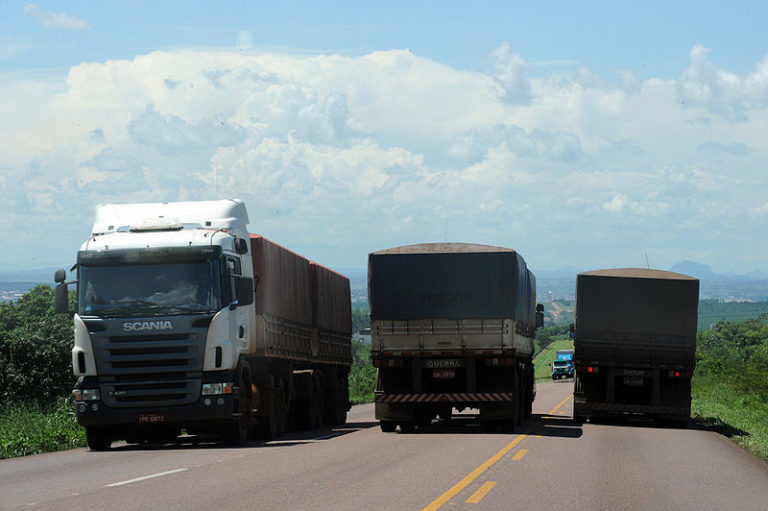
When worldviews collide
Juarez Saw and Agamenom exemplify the two major conflicting worldviews now at play across the Amazon region, and we saw frequent evidence of these battling visions during our month-long trip across the Tapajós basin.
The Munduruku regard the forest as the center of their world and the source of their material, spiritual and cultural wealth. Agamenom and others like him see the forest as something to be cleared away (at a hefty profit), to make room for large-scale agribusiness.
Taking the long view, deforestation, particularly on the scale it is happening along the Pará section of the BR-163, makes little sense economically or environmentally, as it involves replacing a forest ecosystem that is highly productive with another that is far less so.
According to geographer Carlos Walter Porto-Gonçalves, the Amazon rainforest annually produces around 500 to 700 tons of biomass per hectare, while a hectare under soybean cultivation only produces about three tons of biomass, despite all the energy input needed to farm it, including chemical fertilizers and herbicides applied by fossil-fuelled vehicles. When it comes to cattle ranching, which is practiced widely in the region we visited, the biomass output is even lower: just 0.5 tons per hectare per year.

The mega-exuberance and abundance of Amazonian ecosystems — which are renewed annually without any costly human input — is not only essential for the well-being of the people who live in the forest, but it also brings big benefits to people around the planet. Scientists warn that the forest as a whole is vital as a carbon sink to curb climate change; while many of the region’s still unknown and unstudied plant species could possess medicinal properties able to combat diseases and epidemics in the future.
It is, however, difficult to calculate in monetary terms the value of these and other ecological services provided by the forest. But back in 2009 three scientists — Maria del Carmen Vera-Diaz, Robert K. Kaufmann, and Daniel C. Nepstad — tried to do just that, with respect to the proposed paving of the BR-163 highway. They had a stab at working out the benefits that asphalting the road would bring to farmers, as compared to the costs (decreased biodiversity, increased fire risk, etc.) that society would pay for the loss of the forest. This was their conclusion:
Paving the [BR-163] road… would expand the area where growing soybeans is economically feasible by about 70 percent, from 120,000 to 205,000 square kilometers [46,332 to 79,150 square miles]. Most of this new area would be located in the state of Pará and is covered largely by forests. A Cost-Benefit analysis of the road project indicates that the investments in infrastructure would generate more than $180 million for soybean farmers over a period of twenty years. These benefits, however, ignore the project’s environmental impacts. If the destruction of ecological services and products provided by the existing forests is accounted for, then the Cuiabá-Santarém investment would generate a net loss of between $762 million and $1.9 billion.
More recent scientific studies have drawn attention to another unwelcome consequence of deforestation — a severe reduction in the length of the rainy reason. This, scientists say, will have profound consequences for the climate of Brazil, and probably the world.
Yet all this is disregarded by Brazil’s powerful agribusiness lobby, which holds tremendous political influence over the government. Agamenom and others like him expect to pocket the profits they make from rainforest destruction, while leaving society as a whole to grapple with the long-term environmental and social costs.

Past as prelude
Critics have pointed out that the worldview held by today’s capitalist entrepreneurs on the Amazon frontier is little different from that held by the first Conquistadors who pillaged South America in search of precious metals.
The most notorious historic case is that of the Cerro Rico mine in the city of Potosí high in the Bolivian Andes. Huge amounts of silver were dug out there and shipped across the Atlantic, with two major results: Spain was able to afford its seemingly endless wars against the English, French, Dutch and Ottoman Turks. And an estimated eight million enslaved Indians and Africans died in Potosi over a period of 300 years, killed in mining accidents, by lung-related diseases, starvation or exhaustion — with most succumbing, on average, within six months of being forced into the mines.
A similar mentality reigned in colonial Brazil. When the Portuguese arrived in 1500, at least five million Indians likely lived there. Tens of thousands died over the following decades, many from European diseases, such as measles, smallpox, tuberculosis and influenza, while others were killed by the Portuguese bandeirantes (fortune hunters) who wanted indigenous land and the minerals that lay beneath it.
After centuries of massacres, indigenous communities and traditional populations managed to make significant advances in the late 20th century. A turning point in Brazil came with the 1988 Constitution, drawn up upon the return to civilian rule, after 25 years of dictatorship.
Until then, indigenous reserves were areas where Indians were allowed to live temporarily, and often tenuously, until they were ready to be “assimilated” into “national society.”

With the new Constitution the indigenous population gained the right for the first time under Brazilian law to exist as a people. They were legally allowed to keep their lands and continue with their traditional way of life. More indigenous advances came in the 1990s, with the creation of a considerable number of indigenous reserves, often covering huge areas.
In the 21st century also came a growing awareness among “whites” of the need to preserve the country’s ecosystems — a goal largely coherent with the desire to create more indigenous reserves. Infrastructure projects would go ahead but measures would be taken to prevent them destroying ecosystems.
So, in 2006, after the decision was taken to pave the BR-163, an enormous area of conservation units, covering six million hectares (23,000 square miles), was created to protect the Amazon forest. Stricter regulation also led to an impressive decline in the rate of deforestation across the region.
Many saw these government measures as half-hearted and poorly funded, but they were clearly important steps that recognized the intrinsic value of forests and rivers, rather than seeing them exclusively as marketable natural resources. Some judged that Brazil was entering into a new era of greater tolerance and humanity, particularly after the holding of the UN Earth Summit in 1992. It would be an era when exploitation and conservation worldviews would come into better balance.

A rise in exploitation
Evidence in Brazil over recent years has shown clearly and repeatedly that this balancing of values has largely stalled and begun to revert to its exploitive roots. The setbacks began with the first Dilma Rousseff administration in 2011. She became notorious for her desire to boost economic growth, whatever the social and environmental cost.
Her government authorized a series of large hydropower plants in the Tapajós basin, without carrying out the “full, informed and prior” consultation required by the International Labour Organisation (ILO). The pressing of these projects, such as the gigantic Belo Monte dam, not only infringed on the fundamental rights of indigenous and traditional people living in the region, but also made it impossible to hold open, democratic discussions about the economic, social and ecological viability of the projects. Dilma’s mega-dam schemes also flew in the face of very serious concerns by environmentalists.
Similarly, the paving of the BR-163 went ahead under Dilma, despite the warnings of scientists like Carmen Vera-Diaz, Kaufmann and Nepstad who said that great care would be needed to protect the forest and the valuable environmental services it provided.
The construction triggered a wave of Illegal deforestation on both sides of the highway, much of it on public lands, and fuelled a dizzying escalation in the price of cleared land. This was largely caused by the desire of ranchers to get their hands on deforested land, now that they could take their cattle to market cheaply via the highway.
The surge in illegal deforestation was not only predictable, but had actually been predicted, but Dilma’s government ignored the studies. This process continues today, with a huge spike in forest felling around cities like Novo Progresso, as land thieves move onto public lands, cut the trees, and seek to gain permanent control over vast stretches of land.
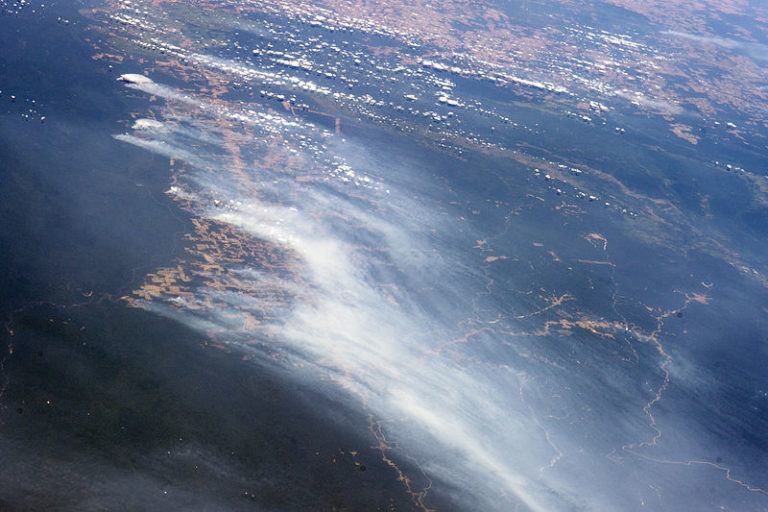
While an alarming trend, many observers assumed that there were limits to what the land thieves could achieve. Even though conservationists were sceptical of the effectiveness of the measures taken to stop deforestation around major highways, like the BR-163, they thought that the great advances made by the indigenous and social movements, many of which are inscribed in the constitution, had created impenetrable legal barriers around conservation units and indigenous territories.
Few thought that there was a real risk of going backwards on these issues.

Come the storm
Michel Temer’s government dashed these confident assumptions after it took over last year. Things that had been bad under Dilma, got much worse under Temer. The bancada ruralista (literally “rural lobby” and including the country’s agribusiness interests), already in control of Congress, made its support for the impeachment of Dilma conditional on gaining key positions in the Temer administration.
Together, Congress and the executive are now using their combined weight to launch an onslaught on indigenous people, traditional populations and the environment.
If agribusiness interests are successful, it will be a huge blow — perhaps an irreversible and fatal one — to many Amazon communities and to the ecosystems they rely on for life.
Over recent months Temer, agriculture minister Blairo Maggi, and the Congress have prepared a vast legislative and juridical apparatus designed to remove the restrictions imposed by Brazil’s environmental and indigenous laws and regulations. Repeated attempts to reach Brazilian officials for comment for this series of articles went unanswered.
The government has launched multiple lines of attack:
Assault on Indigenous reserves: The very principle of indigenous territory is now being challenged. The 1988 Constitution states that indigenous peoples have the right to own forever the territories they have “traditionally occupied.” But legally delineating those “traditionally occupied” areas has been a complex, on-going process, fraught with pitfalls. Many farmers, for instance, who have been occupying indigenous land for decades, are understandably reluctant to move and have resisted Indian claims.
As a result, some 30 years after the Constitution’s approval, many indigenous people have yet to regain their rightful lands. Some squat beside federal roads, kept off their traditional territories by fences. There have been many deaths, as powerful landowners use violence to intimidate the Indians — making Brazil one of the world’s most dangerous places for indigenous populations, and for environmental activists too.
Even so, few directly challenged the principle of indigenous ownership until recently. But with Temer appointments, including Justice Minister Osmar Serraglio, a hard-line politician who is outspoken on the curtailing of Indian rights, that has begun to change.

This year, the government made it much more difficult to create an indigenous reserve. It claims that indigenous groups already have too much land and is refusing to give the go-ahead to new reserves, even when the protracted demarcation process is almost complete.
Critics say that the new procedure, which may be illegal, infringes the basic constitutional rights of indigenous people and ignores the fundamental role they play in protecting the forest.
Attack on conservation: Congress, the most conservative for decades, appears to be catering to land thieves and agribusiness by dismembering conservation units in the Amazon. It is currently in the process of lopping off vast areas from the key mosaic of conservation units alongside the BR-163. Two interim measures — MP 756 and MP 758 — will remove full protection from over one million hectares (3,800 square miles) in a stretch of forest that is already under severe pressure from land thieves.
In practice, the measures will allow these formerly fully conserved federal forests to be privately owned, clear cut, turned into cattle ranches and intensively farmed.
It was President Dilma in 2012 who created the dangerous precedent of reducing the size of conservation units by interim measures, administrative orders that made it easier to build large dams. But the Temer government is now using the same manoeuver to dismantle conservation units in many other areas. While legal experts argue whether such measures are constitutional, the cuts could go into effect as early June — inviting an Amazon land rush, with wholesale deforestation.

Working together, the executive and legislative branches are cutting the size of four conservation units in Pará: the Jamanxim National Forest, Jamanxim National Park, Nascentes da Serra do Cachimbo Biological Reserve. and the Itaituba II National Forest. They also plan to reduce the size of other conservation units in other parts of the Amazon.
Gutting the environmental licensing process: If passed, bill 3,729/2004 will streamline Brazil’s environmental licensing process for new projects, such as mines, dams and other infrastructure.
The deregulation, say environmentalists, will make environmental disasters more likely, such as the one that took place in Mariana in the state of Minas Gerais in November 2015. There, an industrial dam burst and 60 million cubic meters (2.1 billion cubic feet) of toxic iron ore tailings were disgorged into the Doce River, killing 19 people and heavily polluting the stream for 530 miles, all the way to the Atlantic Ocean. It was the biggest single environmental disaster in Brazil’s history.
The gutting of Brazil’s environmental licensing process could pave the way for mining and construction companies to rape the Amazon basin, with major projects moving forward with little government oversight to prevent or mitigate harm to aquatic or terrestrial ecosystems and wildlife.
The bill is currently being fast-tracked through Congress. It requires approval by both the upper and lower houses, which it is expected to obtain.
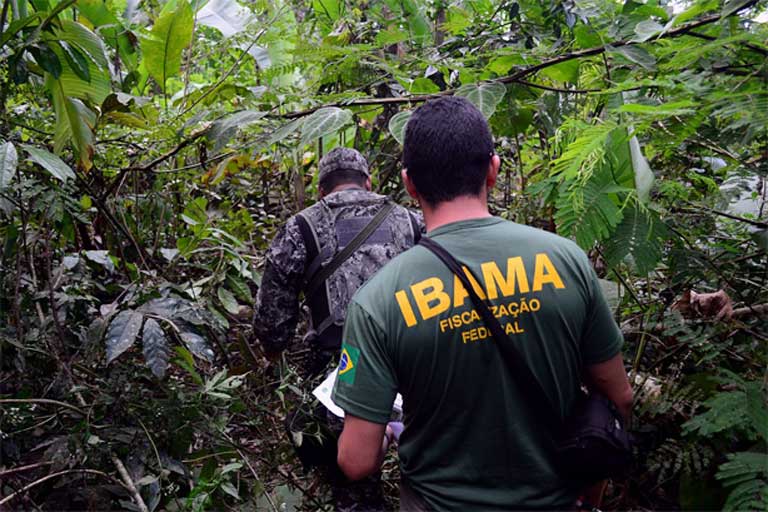
Slashing environmental budgets: The Temer administration has made an unprecedented 51 percent cut to the budget of the Ministry of Environment, which will seriously reduce the capacity of the country’s two most important environmental agencies — IBAMA, its environmental protection agency, and ICMBio, the Chico Mendes Conservation and Biodiversity Institute.
Alfredo Sirkis, the executive secretary of the Brazilian Forum on Climate Change, told Observatório do Clima that the cut was “very serious” and will “profoundly [impact] deforestation — and, consequently, Brazil’s climate targets.”
Even before this latest round of budget cuts, the ministry was struggling with staggeringly insufficient funding, which has contributed to the pace of deforestation in the Amazon, which has increased in the last two years.
Officials are now in doubt that they will be able to carry on with forest monitoring and enforcement. The budget cuts along with rising deforestation rates seem set to unleash an exponential increase in environmental crime. Also, with less law enforcement, violence against indigenous and traditional people living in the forests may rise to new levels.
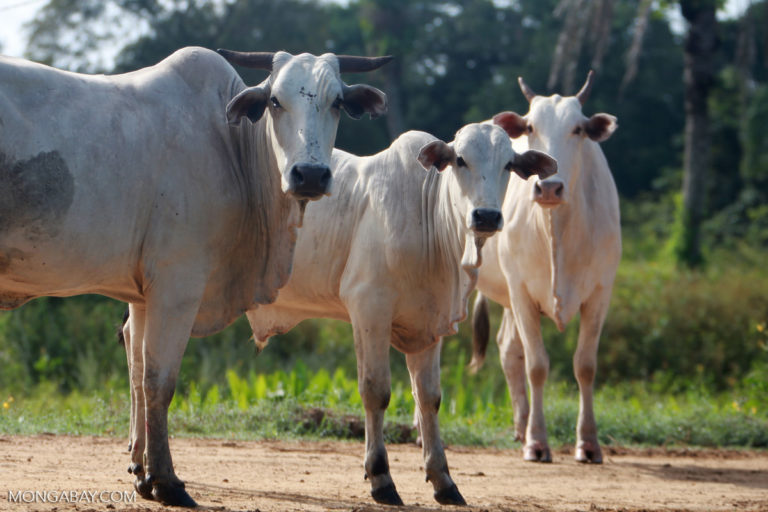
The new Conquistadors
Almost all of these initiatives reflect the growing strength of agribusiness in the Brazilian economy, which in turn has led to the mega-muscle of rural landowners and the bancada ruralista in national and state politics. Land thieves and their emissaries in Congress and in the Temer administration are now setting public policy, and creating new norms to legitimize what, under the rule of law in the past, would have been seen as pillaging.
Now, with powerful allies in high places, wealthy farmers and land grabbers feel emboldened, to the point that some are acting outside the law. We observed this new audaciousness throughout our journey in the Tapajós basin, particularly in our interview with Agamenom, the president of the Novo Progresso rural union. He openly boasted to us of his plan to send an illegal private militia out to evict peasant families from a local land occupation.
We can’t put this too strongly: we left the region fearful of an imminent massacre.
Region-wide carnage hasn’t happened, so far. But on 20 April, armed gunmen tortured and killed nine people, including teenagers and children, in the Taquaruçu do Norte settlement, in the north of Mato Grosso, not far from the area through which we travelled. This horrific violence occurred, despite a 2004 court ruling saying that the families had a right to the property. Ever since, land thieves have pressured the settlers to leave, killing, torturing and imprisoning peasants in private jails.
Though the incident has been reported in the Brazilian press, neither the federal nor state government have reacted to it. It is unlikely that those behind the crime will be held to account. In the last two years, Amazon violence has escalated, with 2016 seeing the assassination of one of the region’s highest environmental officials right in front of his family. Increasingly, stories of intimidation by marauding gunmen in black hoodies circling remote Amazon homesteads on motorcycles are becoming a regional commonplace.

Never in the recent past have indigenous, traditional and peasant communities faced such hostile forces. With their backs to the wall, they feel that their very survival may depend on their capacity to organize and resist, and make appeals to the global community.
That’s what brought representatives of more than 100 indigenous groups to the major protest going on in Brasilia throughout this week. They’ve set up what they call the Acampamento Livre Terra (Free Land Camp) in the heart of the city; only 1,500 indigenous leaders were expected, but more than 3,000 arrived, making it the biggest indigenous mobilization in Brazil’s history.
On Tuesday, the Indians protested by trying to float 200 cardboard coffins on the lake in front of Congress — the coffins represented recently assassinated indigenous people, 137 in 2015 alone, according to Cimi, the Catholic Church’s indigenous council. The Indians were dispersed violently by the police, who claimed that they were trying to enter Congress.
For the Indians, the welcome they received in Brasilia provided new evidence that the intolerance, exploitation, violence and ethnocide they’ve battled for more than 500 years still hold sway. But resistance during those many years of conflict have honed indigenous political skills and sharpened courage. The arrows fired Tuesday in response to the tear gas bombs and rubber bullets are a clear demonstration of the will to stand up to power.
(Leia essa matéria em português no The Intercept Brasil. You can also read Mongabay’s series on the Tapajós Basin in Portuguese at The Intercept Brasil)
FEEDBACK: Use this form to send a message to the author of this post. If you want to post a public comment, you can do that at the bottom of the page.














